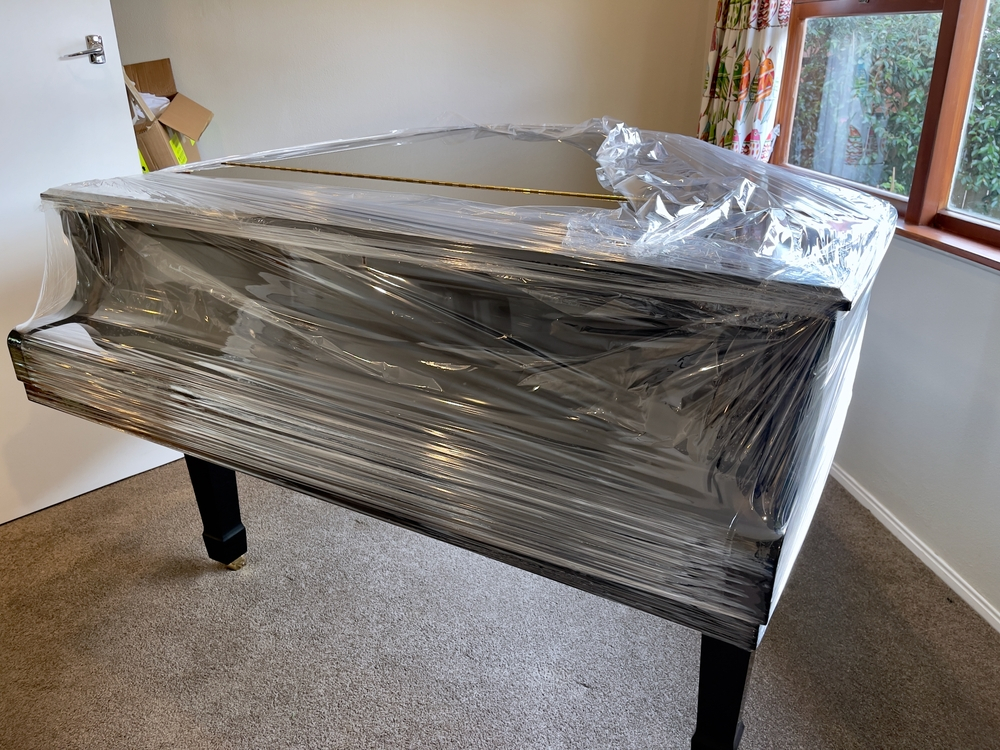How to Move a Piano by Myself?
How to move a piano by myself? Moving a piano by yourself can seem like a daunting task, but with careful planning and proper technique, it’s possible to do so safely and efficiently. In this comprehensive guide, Sprint Mover provides expert tips to help you navigate the process of moving a piano solo.
How to Move a Piano by Myself?
1. Gather the Necessary Equipment:
- Heavy-Duty Furniture Dolly: Invest in a sturdy furniture dolly with padded straps or blankets to securely transport the piano.
- Moving Blankets: Use thick moving blankets to protect the piano’s finish from scratches and dings during transport.
- Piano Skid Board: If available, use a specialized piano skid board to maneuver the piano smoothly and safely.
2. Prepare the Piano for Moving:
- Secure the Keyboard Lid: Close and lock the keyboard lid to prevent it from opening during transport and damaging the keys.
- Wrap the Piano: Cover the entire piano with moving blankets and secure them with packing tape to provide additional protection.
3. Enlist Help if Possible:
- Recruit Assistants: If feasible, ask friends or family members to assist you in lifting and maneuvering the piano. Additional hands can make the process safer and more manageable.
4. Plan the Route:
- Measure Doorways and Hallways: Measure the dimensions of doorways, stairwells, and hallways to ensure the piano can fit through without difficulty.
- Clear the Path: Remove any obstacles or furniture along the intended route to create a clear path for moving the piano.
5. Lift and Maneuver Safely:
- Use Proper Lifting Technique: Bend at the knees and lift with your legs, keeping your back straight to avoid strain or injury.
- Slide the Piano Onto the Dolly: Carefully tilt the piano onto its side and slide the dolly underneath, ensuring it is centered and secure.
6. Secure the Piano for Transport:
- Strap the Piano to the Dolly: Use heavy-duty straps or ropes to secure the piano to the dolly, preventing it from shifting or tipping during transport.
- Test Stability: Before moving, gently rock the piano to ensure it is securely fastened to the dolly.
7. Move Slowly and Carefully:
- Navigate Obstacles with Caution: Proceed slowly and carefully, especially when navigating stairs or uneven terrain. Use the dolly’s brakes to control the descent on slopes.
8. Unload and Position Safely:
- Reverse the Process: When unloading the piano, follow the same steps in reverse, ensuring a smooth and controlled descent from the dolly.
- Position the Piano: Once in its new location, carefully position the piano and remove the moving blankets, taking care not to scratch the floors or walls.
Conclusion:
Moving a piano by yourself requires careful planning, proper equipment, and adherence to safety guidelines. By following these expert tips from Sprint Mover, you can successfully move your piano alone while minimizing the risk of injury or damage. Remember to prioritize safety at all times and consider seeking professional assistance if needed.


